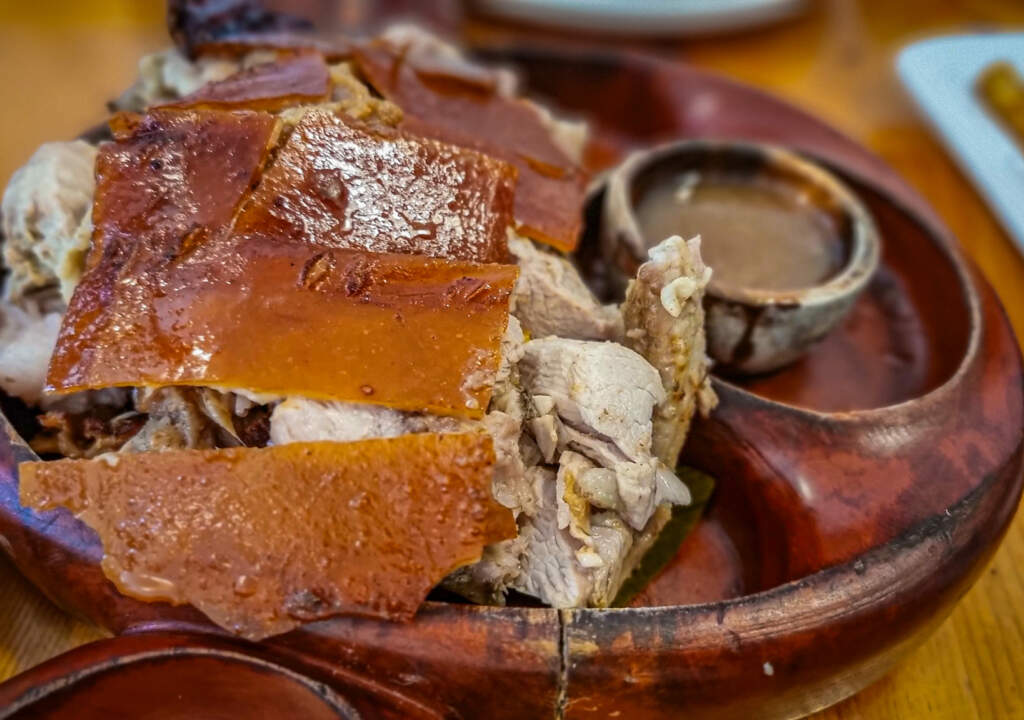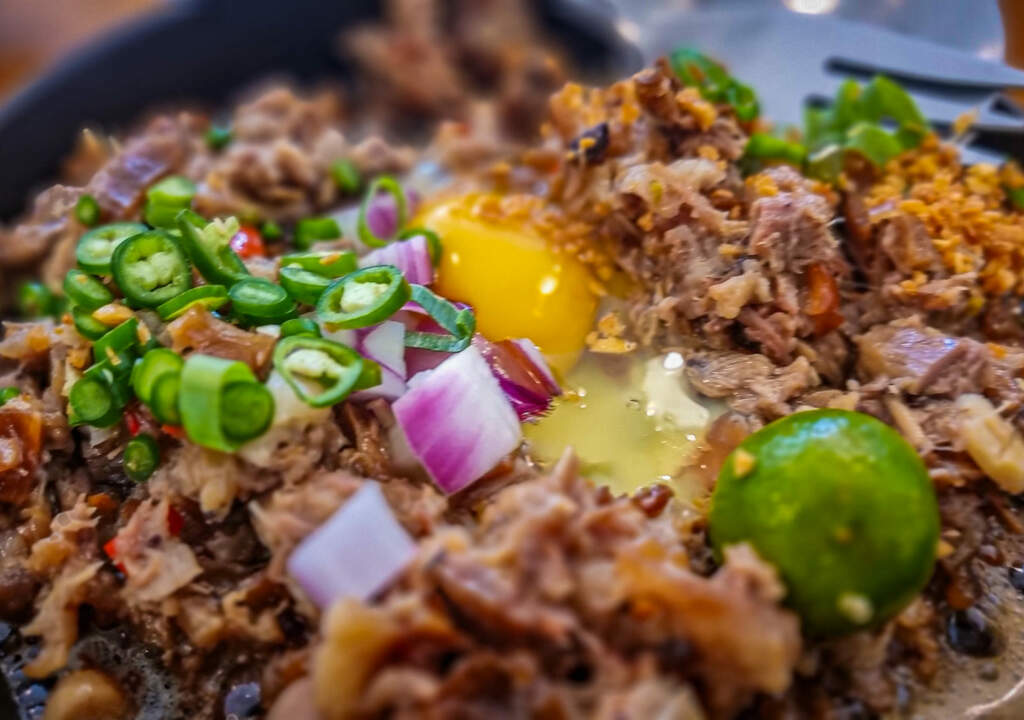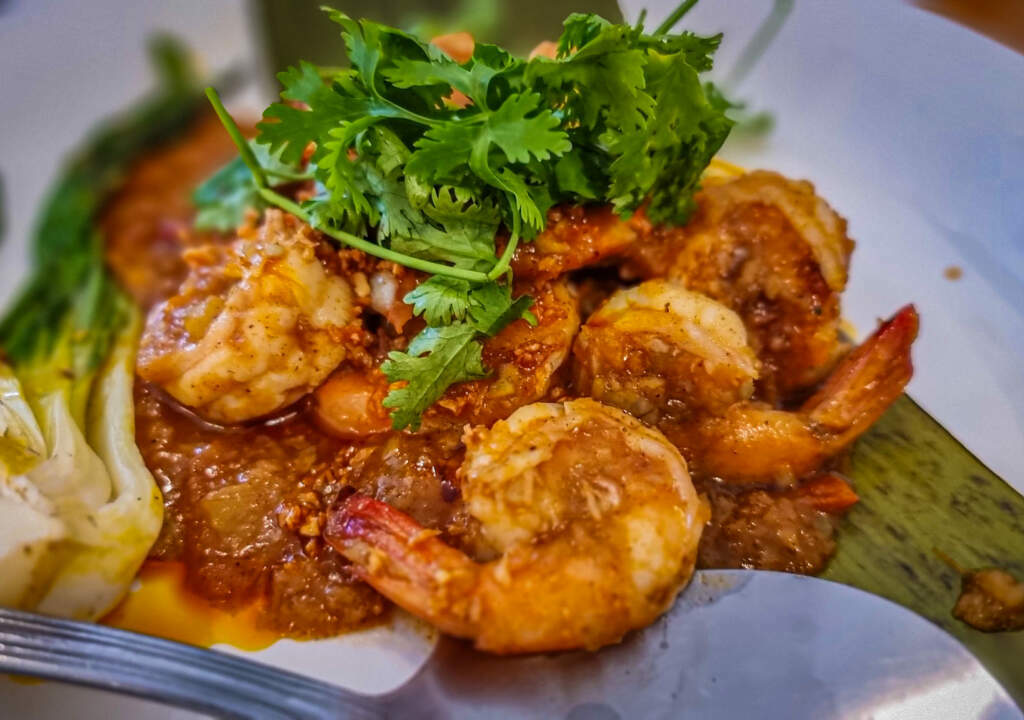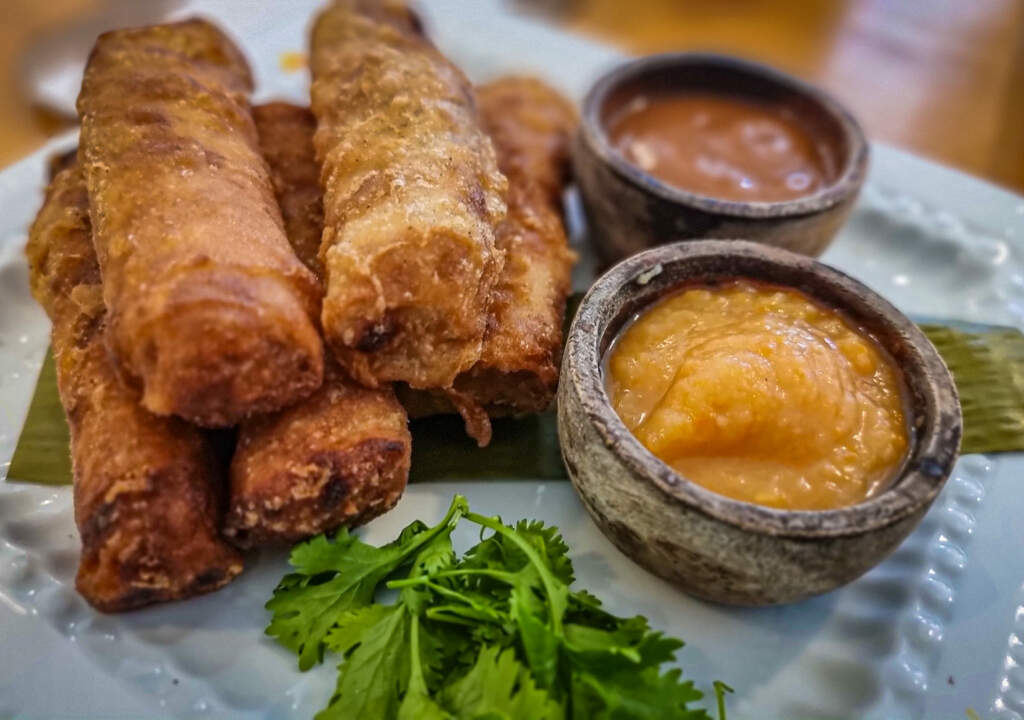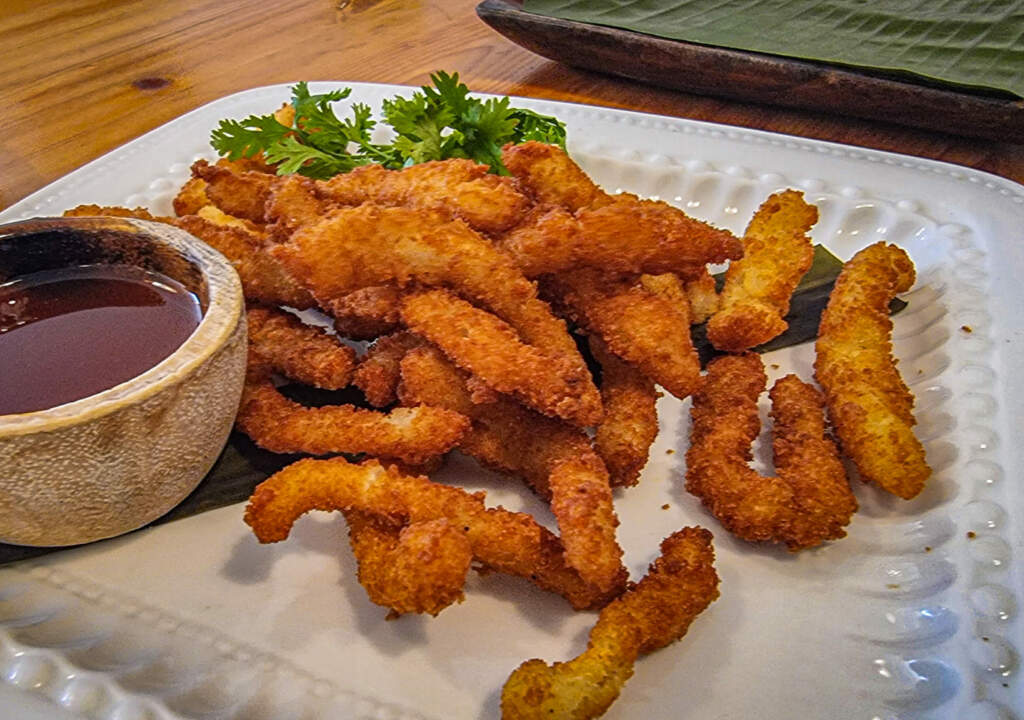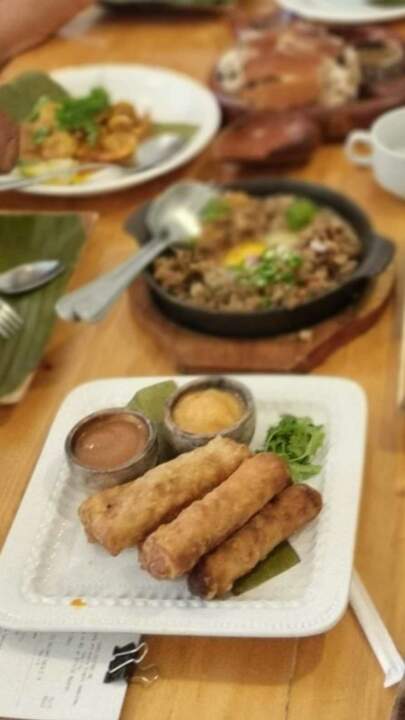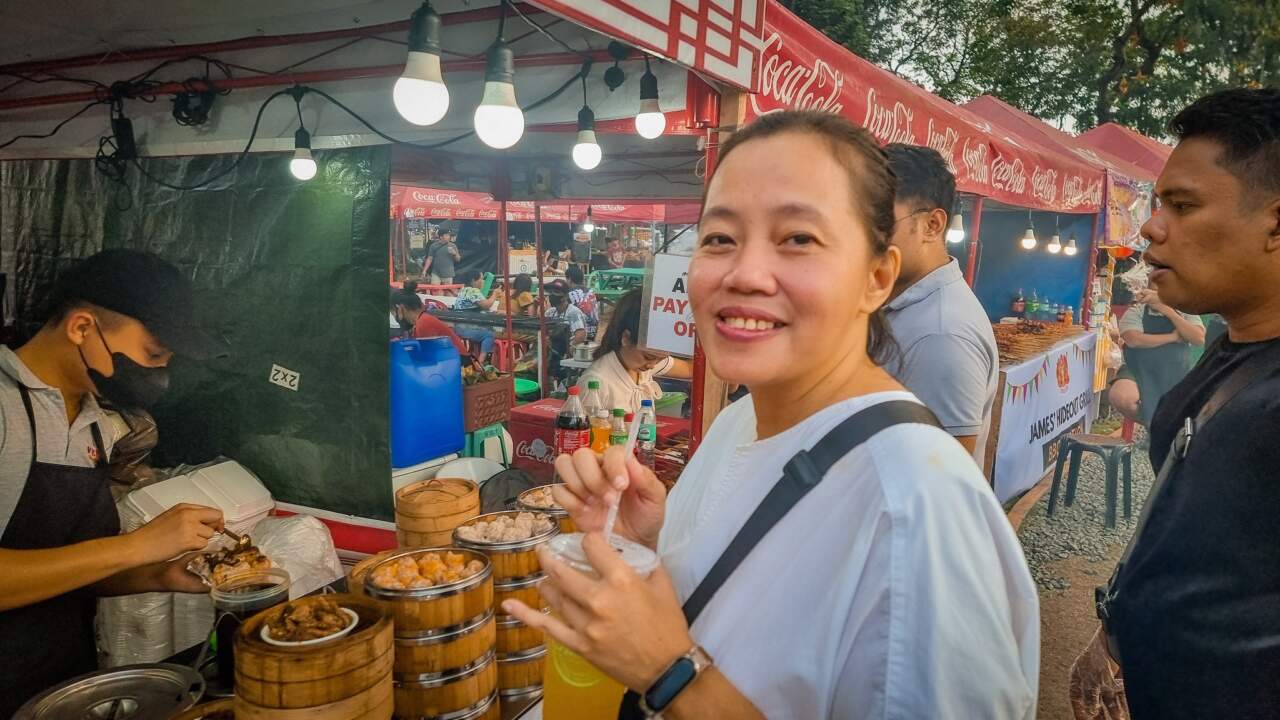Hello moms and dads, January came like a bang and I hope you’re all looking forward to the summer season as much as I am! I’ve been taking some time off and accompanying my husband for a Filipino Martial Arts training (Escrima) in the beautiful and historical Cebu, just in time for the festivities of the Sinulog festival in 2024.
While soaking in the vibrant dances, colorful parade floats and spiritual Masses was certainly the main event, you know I also can’t miss an opportunity for a food trip whenever I visit a new place. After putting in our steps dancing to the rhythmic beat of the drums all day, it was time to fuel up Cebu-style at some of the islands’ most beloved culinary institutions.
Our Cebu Food Trip Hit List
- Domings Ngo Hiong ⭐️
- Pungko Pungko sa Osmena ⭐️⭐️⭐️
- Rico’s Lechon ⭐️⭐️⭐️⭐️
- Parr’t Ebelle ⭐️⭐️⭐️⭐️
- Itchoy Batchoyan ⭐️⭐️⭐️
- House of Lechon ⭐️⭐️⭐️⭐️
Domings Ngo Hiong
First up was a must for any Cebu food trip – Domings Ngo Hiong at Manalili Street for some authentic Chinese food in Cebu. Stepping into the busy Cebu streets was like being transported straight to Binondo in Manila, only with less people and more room for walking. The shop is big and looks like a regular Chinese mom-and-pop operation. They seem to have regulars but the staff is a bit inattentive. We squeezed our way up to the counters and ordered Ngo Hiong, siomai and siopao, steamed fried rice, piping hot from the steamers. The siomai and siopao was okay.
I’ve observed that Cebuanos eat Siopao differently and use ketchup instead of the sweet-salty sauce I grew up with in Luzon. Love to notice these little tidbits that make the hassle of travel worth it! The steamed fried rice is rice with a savory broth of shrimp, pork, beef, and green peas poured on top. It was different and good!
I also got to eat my first “puso” here. Puso (heart) is rice wrapped and boiled in a heart shaped casing made of woven coconut leaves. It has slits in the middle and you just open it and eat it with your viand. It’s so ubiquitous here in Cebu and you can find it in every food stand and pungko pungko. I was surprised at first because I always assumed that it’d be like “suman” -sticky rice but it turned out to be really just rice. I’m not sure why they have this tradition -perhaps because the Cebuanos started as seafaring people and have to bring prepared rice on raids and long journeys? Or did they experience a period where there was no rice and they had to preserve it? Perhaps.

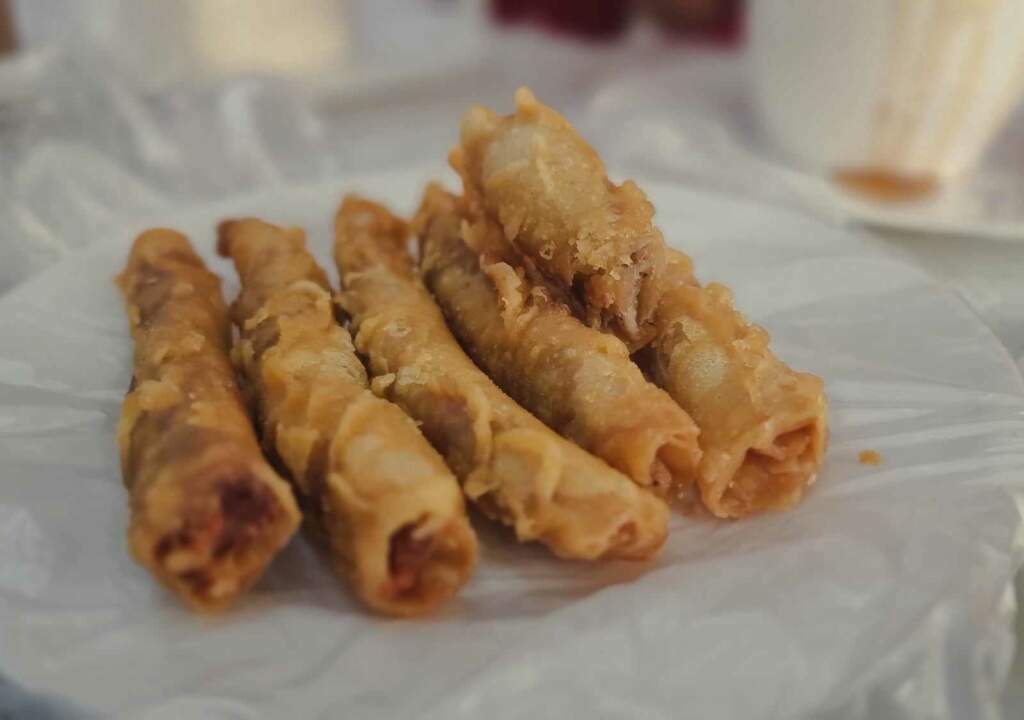
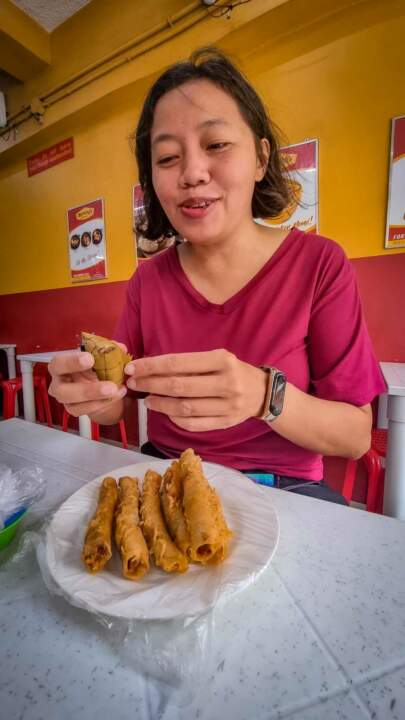
Now to the Ngo Hiong. Ngo hiong is a popular Cebuano comfort food -something like the Lumpia which must be a sister from another mother. It is deep-fried and filled with singkamas (jicama), ubod (coconut palm heart), minced pork, minced shrimps, garlic, and onions then served with a sweet and sour sauce piked with 5 spice powder -which is what Ngo Hiong means, I’m told.
The press release says that the thin, delicate wrappers melt in your mouth but sad to say, our experience of the Ngo Hiong was a bit on the chewy side. The wrapper was thick and I could hardly taste anything. I would probably make my version to see the difference and see if I can make it at home. Still, it was a good experience and so happy to see history at play with the existence of a different Chinese food in Cebu that’s not as common in Manila!
Pungko Pungko sa Osmena
The next day, we waddled over to Pungko Pungko sa Osmena in the lively downtown core for a taste of Cebu’s sugbo and ihaw ihaw food culture. I’ve been trying to walk everywhere so as to better appreciate the vibe of Cebu. It did not disappoint! The food choices were dizzying. The food stalls have different options -crispy fried bulaklak, pork chop, and every kind of crispy fried food you can think of. There were grilled versions of everything, isaw, chicken, liempo, seafoods, etc. I got some grilled fish and ended up eating siomai and chicken feet again, lol. I just love Chinese food.
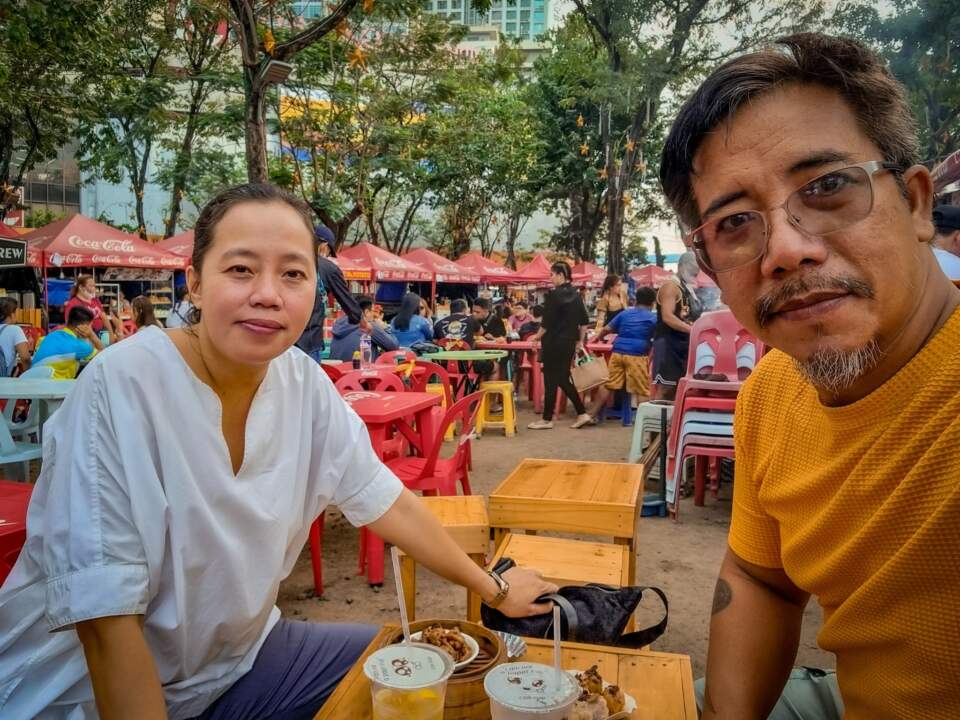
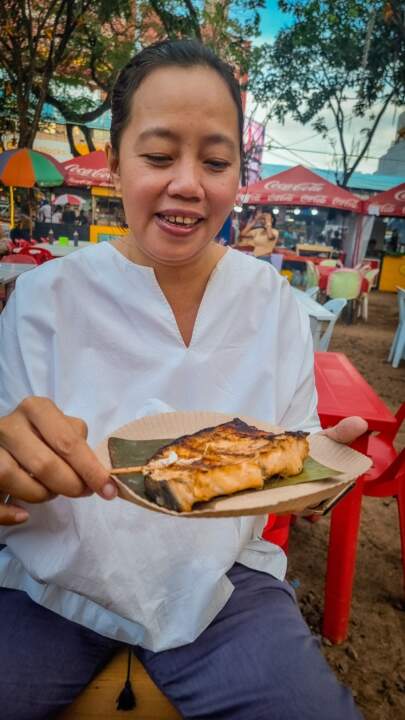
Ricos’ Lechon
No trip is complete without a pit stop at Ricos’ Lechon in Mandaue for a spin at the whole roasted pig. It was out of the way and a bit far from Cebu City (P350 on Grab) but this institution has been slow-roasting whole suckling pigs over wood fire since 1964 so I wanted to see it first. Truth to tell, the House of Lechon was better reviewed but still, as a history buff, I wanted to situate myself on the ground and see it for myself.
The establishment was big and bustling. There’s space for parking so you don’t need to worry about parking by the road. There’s a waiting area where you can have photos and look over the gallery of “sikat” visitors. Looks like a lot of visitors came straight from the airport with huge maletas in tow.
The beautiful roast pig, with its intensely caramelized and crispy salty skin, was nothing short of a work of art. The meat was fall-off-the-bone tender with a crispy exterior. Dreamy. Simply divine with pots of vinegared dipping sauce. When I first tasted Lechon Cebu, I wondered how it could be so different with our Tagalog Lechon. It is so tasty without the need for sauce! I may have worked up another sweat just from watching the kitchen staff cutting up rows of rows of those roast pig!
Aside from the Lechon, we ordered a set -the one with Kare kare, Crispy Fried Fish, and banana turon for dessert. Turns out, this set is a budget version. The Kare kare didn’t have any protein -vegetable kare kare essentially, and the fish was a bit on the “malansa” side. Banana turon was fine and was heaven-sent after all that lechon. Staff is friendly but has to ask for tap water a couple of times before they gave it to us.
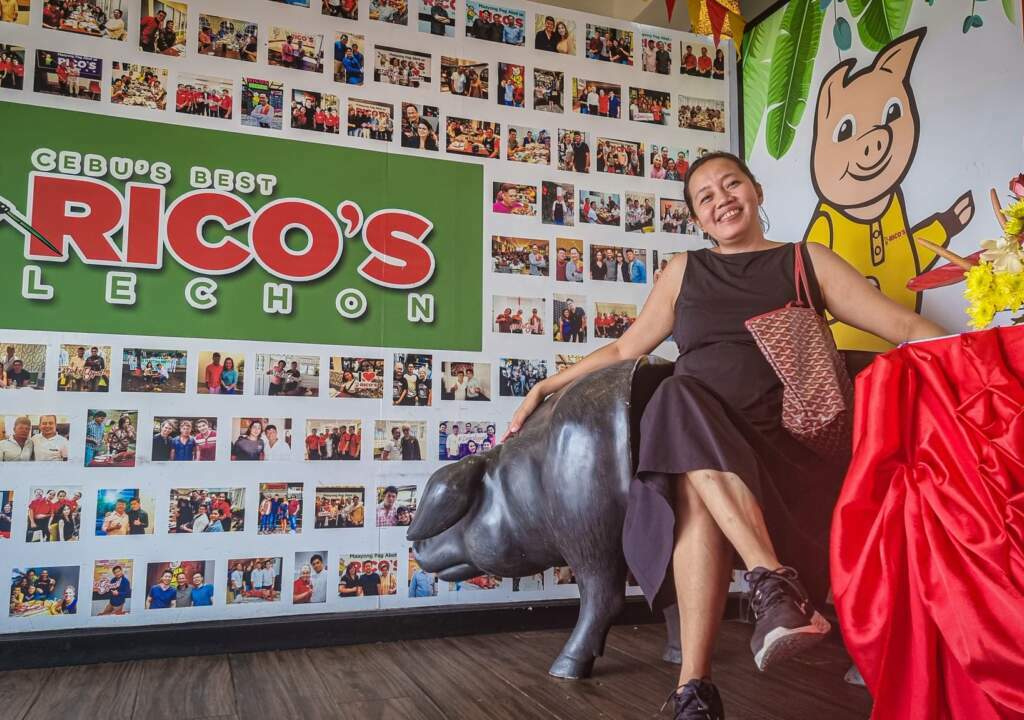
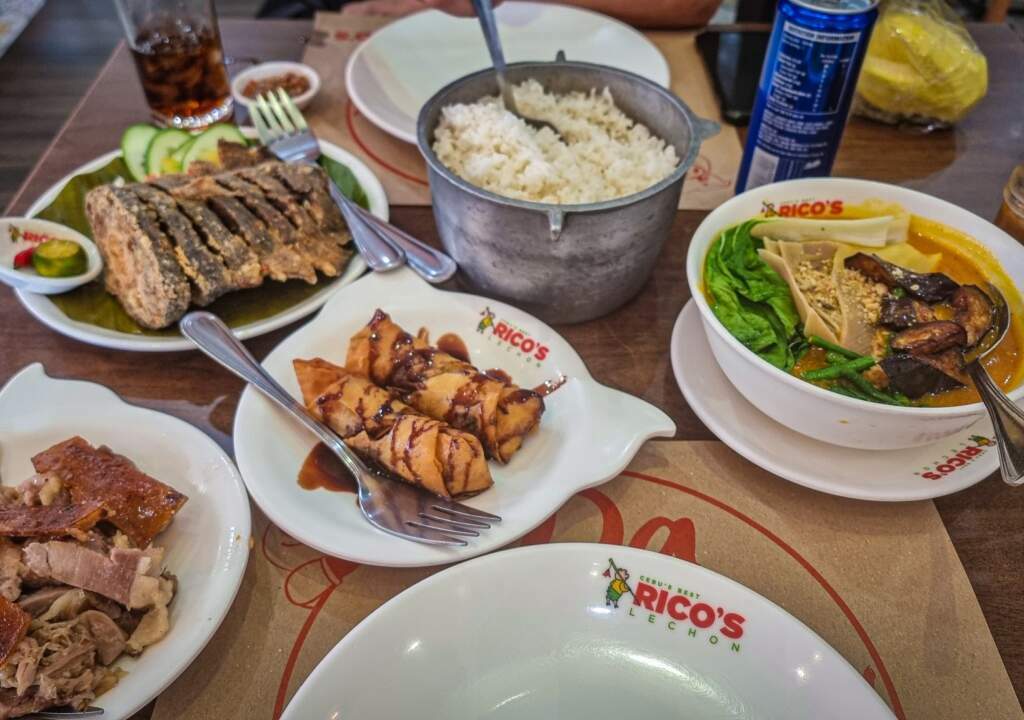
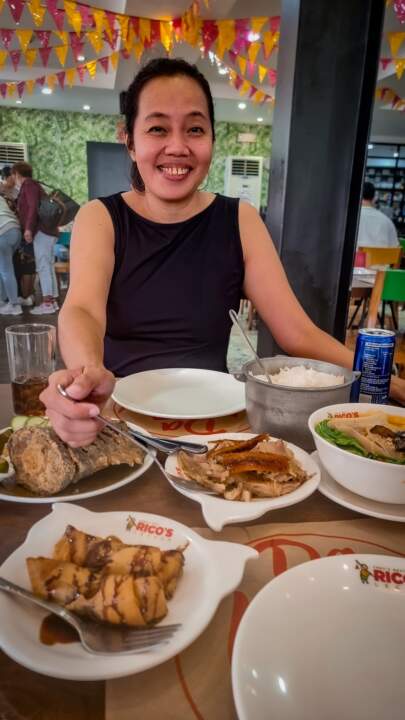
Parr’t Ebelle
To cool off from all that crisp lechon skin indulgence, the next day’s lunch was the freshest, most refreshing tinola I’ve ever had. I was surprised at first because I thought Tinola is chicken by default. Turns out any soup with ginger is called tinola! You learn something new every day!
We had this fish tinola at Parr’t Ebelle in the reclamation area just a stone’s throw from the SM City Mall in Road 6. Their fish tinola version is famous for large chunks of white malasugui (marlin) fish. The fish is simmered in a simple ginger, tomatoes, and patis (fish sauce) combination resulting in a rich, clear broth that is not fishy at all. It reminded me of those nights when we’d travel to the Dalahican Port in Lucena and there’d be piping hot nilagang isda to heat us up while waiting for the boat in the cold and windy morning.
We also got some freshly grilled tasik (I’m not sure what kind of fish this is but they’re huge as well! Google says they’re called large sea catfish.) I really really loved the salty skin and the sweetish but flavorful grilled fish. You don’t even need to pair it with rice as you can “papak” it on its own. Wasn’t able to finish all of them so took them home and still tasted fresh the next morning. It was just the reset I needed as the sun went down on another perfect day in Cebu. For those asking, I wasn’t able to ask why the name is spelled that way. It was such a busy day for the staff, sorry!
A note on ordering at Parrt Ebelle, it was a bit bewildering at first. There were 3 stations where you have to get your food from -the inihaw section, the tinola section, and the rice section. There’s also the drinks section (a refrigerator) :), and the condiments section for your sawsawan. You just need to pila and get your food. Payment is after eating. You just have to call out when you’re done. Easy peasy! (I wonder though if someone tried to snuck out without paying, lol) We paid P1200 for 2 but we ordered so much so it’s like food for 4.
Ps, Got this recommendation from Let’s Eat Pare in FB. Thank you so much Sen JV Ejercito for recommending this grill resto! It was awesome.

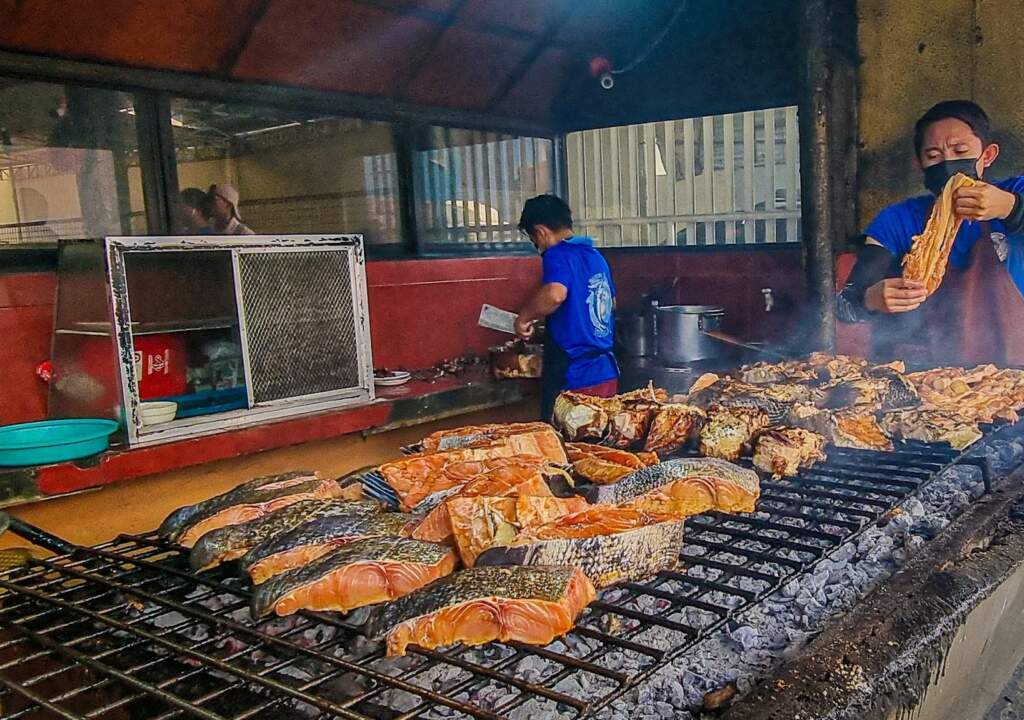
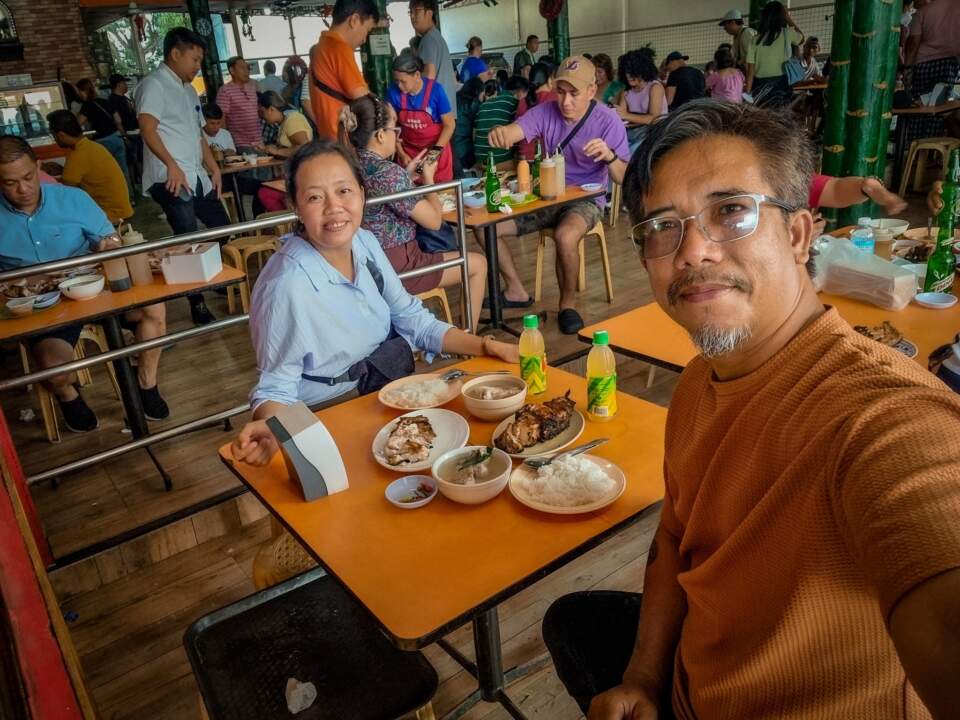
Itchoy Batchoyan
A new restaurant we tried to add to our Cebu food trip, recommended by a friend is the Itchoy Batchoyan near Fuente Osmena. We got lost the first time so make sure you check your Google Maps before going. They have batchoy, grilled scallops, and a good list of Filipino offerings. The service was friendly and fast. Food was okay. Hubby (who was from Iloilo) was over the moon with his batchoy but I found it salty which is my general feedback for all the batchoy I tasted so… Super enjoyed the bone marrow though. I took the baked scallops home and it was even better the next day. Yummm. Anyway, have to go back to taste the kare kare, pares, and sisig for a better report.
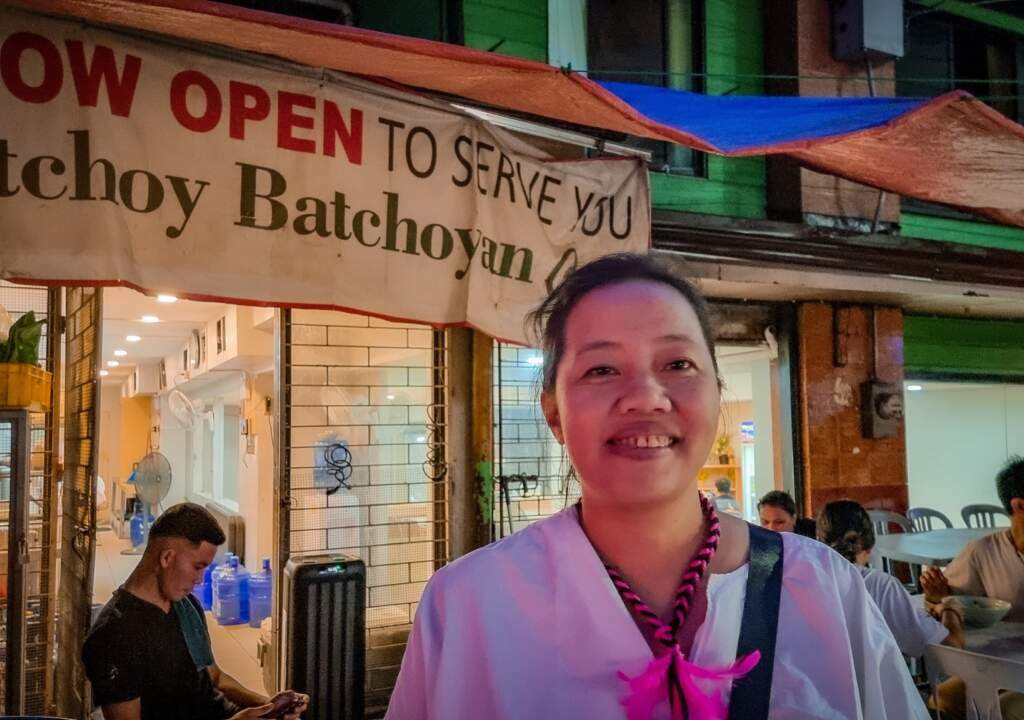
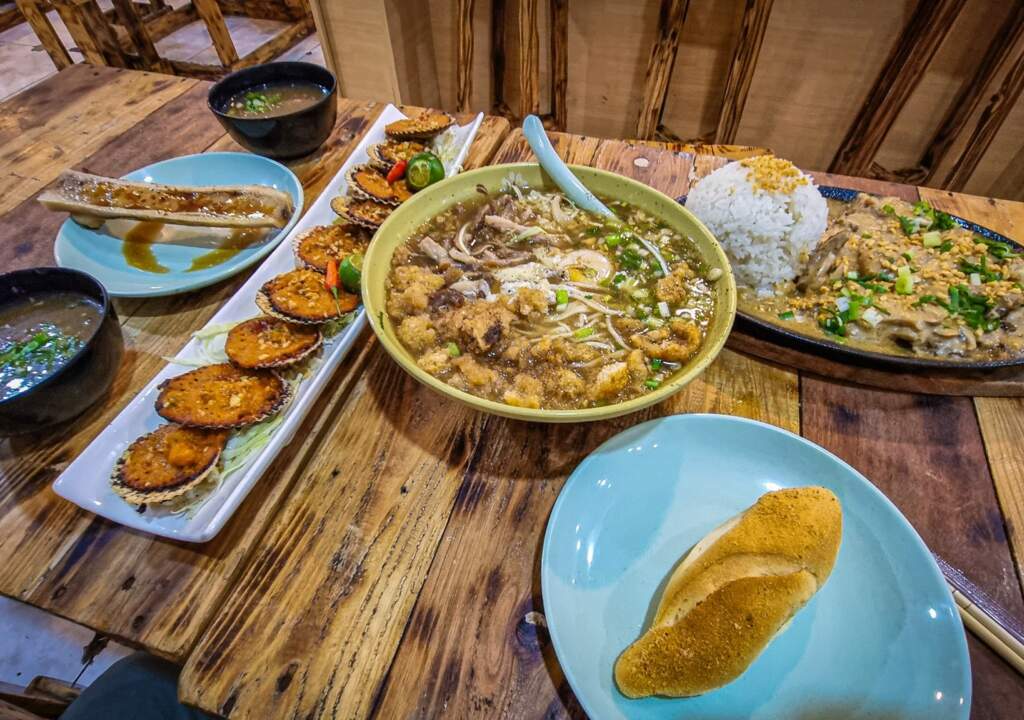
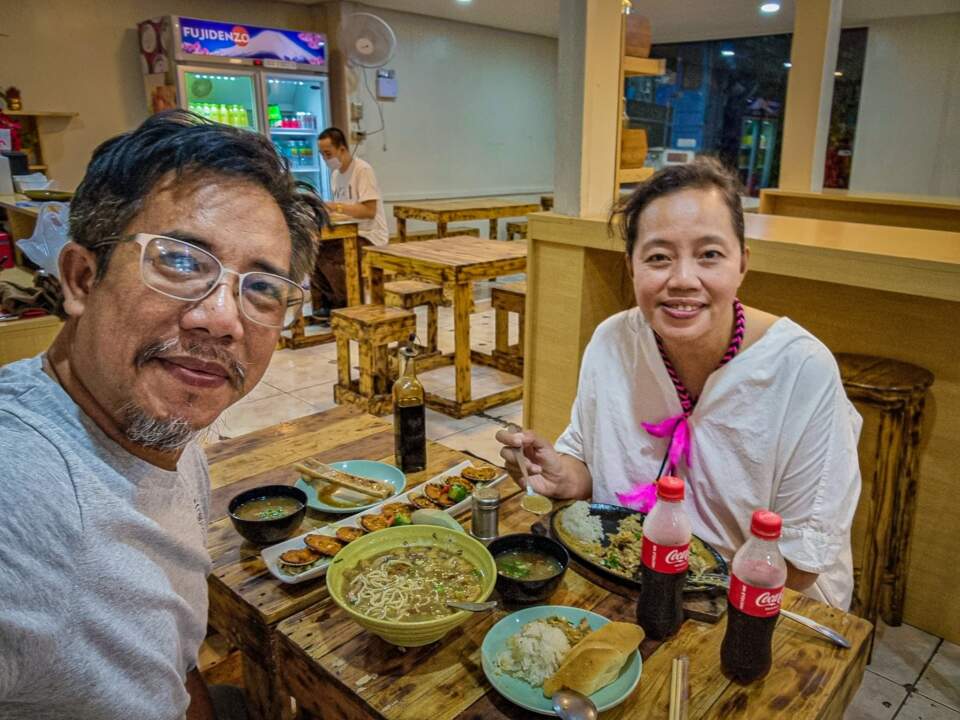

Check the menu at my back. :)
Overall, the restaurants we visited for the Cebu food trip were good. One of the general minus points is that all of these restaurants won’t give you water unless you ask for it and most of the time, they only offer bottled water. Why is that, Cebu?!
I hope you all get the chance to visit these culinary gems and do a Cebu food trip soon. The culture, hospitality, and food will leave you longing to return again and again.
PS, I will update this article as we are leaving in a week and there are so much more to explore! Still on the list are House of Lechon, Carcar (maybe next time), and Yobab (permanently closed ?).
-0-
Cebu Food Trip Update:
House of Lechon
The House of Lechon is probably the best place to eat especially if you’re coming to Cebu the first time. It was spacious and I liked the native vibe including the Ms Universe chairs. The food was portioned well (huge, actually), and the staff was very friendly and attentive despite the lunch hour rush. The price range is a bit higher than others but reasonable for the place and the kind of service.
I think the Lechon here is better tasting than Rico’s Lechon. I also got a better-tasting Ngo Hiong this time! Rice in kaldero is so cute. Location is ++ since it’s very accessible (near Ayala). We came here with international visitors and it was also a great experience for them. Peter (from Argentina) was so in love with the sisig and he asked me a thousand times how to make them so he could make it at home!
